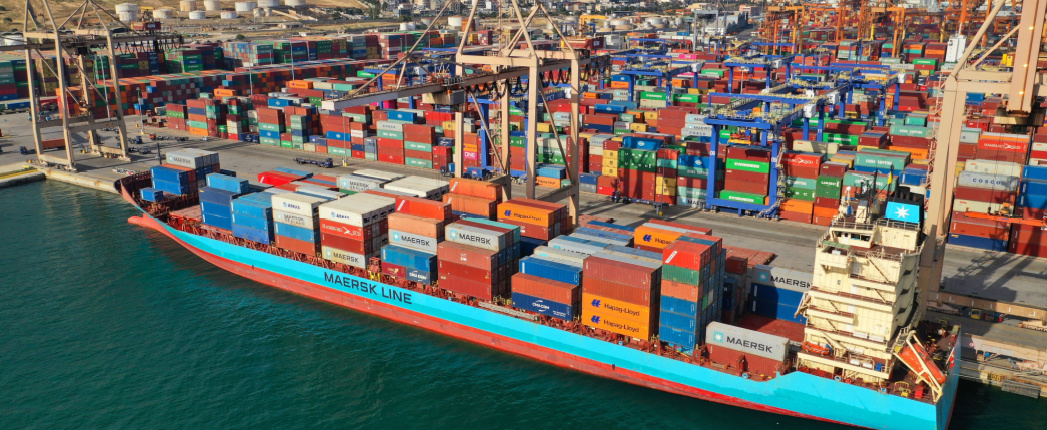
The emerging era of new ship engine designs and the mosaic of interim and future fuels that are part of shipping’s transition towards decarbonization pose a variety of performance challenges for marine lubricants, a lubricant additives company official said during an online webinar earlier this month.
Although industry forecasts predict a steady decline in use of traditional fossil-liquid diesel fuels in ship engines, these will remain in operation for some time to come, while the transition to future alternate fuels evolves, Simon Tarrant, Lubrizol’s global business manager – large engines, said during a webinar, “A new era of marine fuels: what it means for engines, ship management and lubrication,” hosted by Riviera Maritime Media. By 2030 carbon emissions for the shipping industry will have to reduce by 40% and by 2050, by 70%.
“[Liquid natural gas] and other engine transition fuels are providing key insights to new lubricant requirements that are helping to build knowledge and foundation for other future fuels lubricant developments,” he said. “Some may require new lubricants. It will not be a one size fits all, single ‘silver single bullet’ lubricant.”
Tarrant noted that within the ship engines and fuels evolution, growth is expected in so-called interim fuels, such as liquid natural gas and liquefied petroleum gas. That will be along with the emergence of newer fuels, where ammonia and methanol appear to be favored as the front runners for long-term deep-sea shipping, he noted, whereas hydrogen may be more suited for other applications.
On the liquid natural gas side, changes come from the fuel’s gaseous nature, which has less inherent sulfur content, he said. The lower 25 base number cylinder oils designed for ultra-low sulfur fuel oils fit the sulfur profile but did not have sufficient thermal robustness and cleaning ability, he noted, adding that piston images showed wear and deposit issues. “Switching between low and high BN or opting for higher BN lubricant does ensure us a greater level of chemistry in the lubricant to counter these issues, but has a higher than needed acid neutralization,” he said. “The new era of high performing 40BN lubricants meeting the Man Category II standard are a far more ideal solution.”
MO 2020 fuel regulations at the start of 2020 led the shipping industry to shift to low-sulfur fuel oils, in turn causing a transition from base number 70 or BN 100 grades cylinder oils to novel BN 40 products.
According to German ship builder Man Energy Solutions, creator of the Category II 40BN cylinder oil category, cylinder and system oils in the new category are expected to become available from several suppliers in this year’s fourth quarter. They aim to perform equal to or better than a 100 BN oil in regard to cleaning, Kjeld Aabo, director new technologies for Man Energy Solutions, said during the webinar. The new category came about because some lubricants aimed for low sulfur applications were not adequately able to prevent and manage the deposit formation, especially in newer engine types, Aabo explained. Category II cylinder oils are applicable for all engines and recommended for Man B&W two-stroke engines Mark 9 and higher.
With biofuels, Tarrant said, experience from the automotive sector gives rise to concerns about their propensity for deposit formation that can lead to wear, when moving from standard diesel fuel to 100% biofuels. “While presently there’s limited marine usage with high content, and most trials thus far are short in duration, the long-term impacts are not yet fully known,” Tarrant added. “Several industry forecasts suggest biofuel could become a key pilot fuel for those other future fuels, and the lubricants will therefore need to provide excellent deposit handling, and cleanliness.”
On the methanol side, he said, there’s very little experience yet to go on, with only a limited number of ships and service experience. This makes it difficult to know what its impact on lubricant performance, he said, though there is some idea what challenges it may represent.
“Methanol’s interaction with oil has the potential for compatibility and emulsion issues,” he said. “The lubricant will need to maintain excellent cleaning ability, enhanced wear protection and demulsification as a result. These fuels are often referred to as drop in, but we should not assume that traditional lubricants will suffice.” Newer, higher performing lubricants that meet the MAN Category II standard should be the go-to option, he added.
Development is continuing on ship engines that use ammonia to reduce emissions. The first ammonia-fueled ship engines are expected to reach the market in around 2024.
“This could be well viewed as the proverbial chicken and the egg situation,” Tarrant said. “We’re trying to understand the lubricant requirements and develop appropriate solutions somewhat ahead of the engines and the fuels being available. That said, we have a duty of care to seek to identify the potential lubricant requirements and be proactive in providing solutions for the market.”
He noted that ammonia is very different than traditional fuels that have been used and brings many inherent characteristic challenges. For example, safety, toxicity, corrosivity, combustibility and compatibility,” Tarrant said. “And these highlight and inform key elements of our ongoing research and development.” The marine lubricant can and will provide a solution for ammonia fuel’s corrosivity issues, he said. “Ammonia will also create new and different regimes of acids,” he added, and any acid neutralization solution will need to account for that. “This can and will only become fully clear when we can begin to combust ammonia in ways that truly represent the engine environment,” he said.